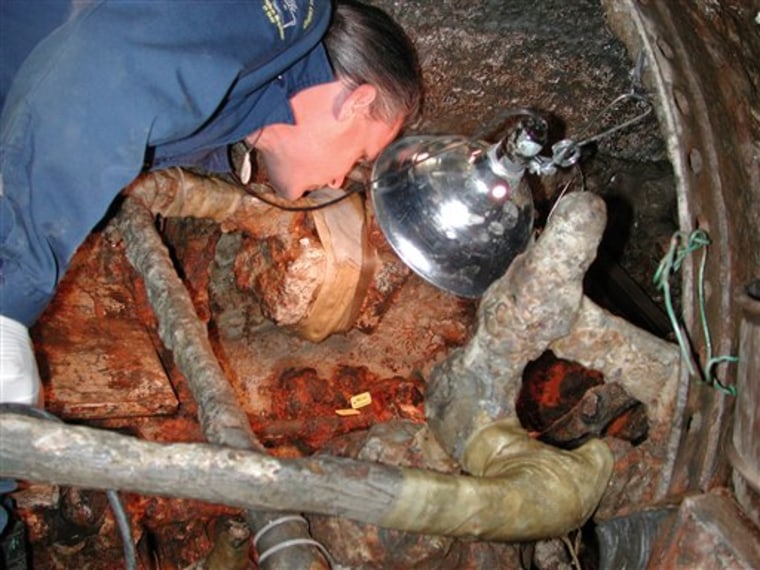In a year's time, scientists hope to solve the mystery of why the Confederate submarine H.L. Hunley sank, the chairman of the South Carolina Hunley Commission said Tuesday.
"Between the science of archaeology and the science of conservation in that laboratory, they will solve the ultimate mystery," state Sen. Glenn McConnell said after a commission meeting. "I think it's reasonable to say we're probably within a year of solving that."
The hand-cranked Hunley sank the Union blockade ship Housatonic in 1864, becoming the first submarine in history to sink an enemy warship.
It was found 11 years ago and raised in 2000 from the Atlantic and is in a conservation lab. But the vessel has been slow revealing its secrets.
Two theories for demise
There are generally two theories why it sank shortly after sending the Housatonic to the bottom. One is that it was damaged and took on water after the attack. The other is that the crew suffocated when they ran out of air.
Scientists are removing the sediment that hardened on the inside of the sub. Next spring, they will begin removing the hardened sediment from the hull.
"The exterior will be the real key to the thing," said Randy Burbage, a commission member. "You will be able to tell if another ship rammed it, which is a possibility, or if any other event may have happened."
McConnell said that includes the possibility the Hunley's hull may have been damaged by rifle fire or debris from the explosion on the Housatonic.
Removing the sediment from the inside will reveal the positions of valves used to run the pumps, which will provide a clue whether the sub was taking on water, McConnell said.
Another artifact will soon be displayed at the Hunley lab: a watch once owned by Queenie Bennett, the sweetheart of the sub's commander, Lt. George Dixon.
The watch, as ornate as one owned by Dixon and which was found on the sub four years ago, is inscribed with the words "Queenie Bennett Dec. 25, 1862."
It's not known whether the watch was a Christmas gift from Dixon, "but we think that is the last Christmas he spent with her," Burbage said.
The project’s financial side
Last week the state Budget and Control Board put off approval of Clemson University's plans to build a campus in North Charleston focusing on environmental science, materials technology and urban redevelopment.
As part of the project, Clemson would assume the conservation of the Hunley.
McConnell said Tuesday conservation will continue with or without Clemson. Income from donations, tours, merchandise sales, grants and other sources "will allow us to go to the finish line" with restoration work, he said.
Figures released by The Friends of the Hunley, which has been raising money for the conservation, show that as of Nov. 5, $1.1 million has been raised this year for the work. That compares with $1.2 million for all of last year.
Last year, the Hunley received $205,000 in government funds. This year that figure was almost $93,000.
General fundraising this year was $529,000, compared with $426,000 last year. The Hunley also gets revenue from tours of the sub and the sale of Hunley merchandise.
